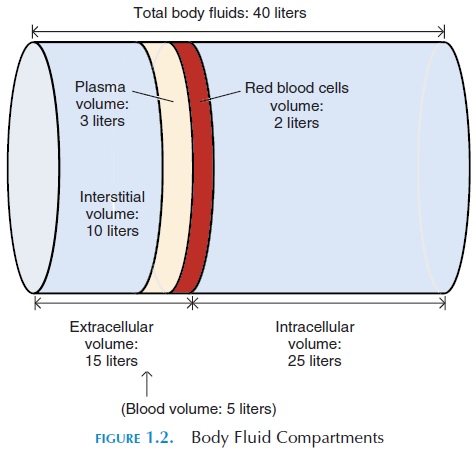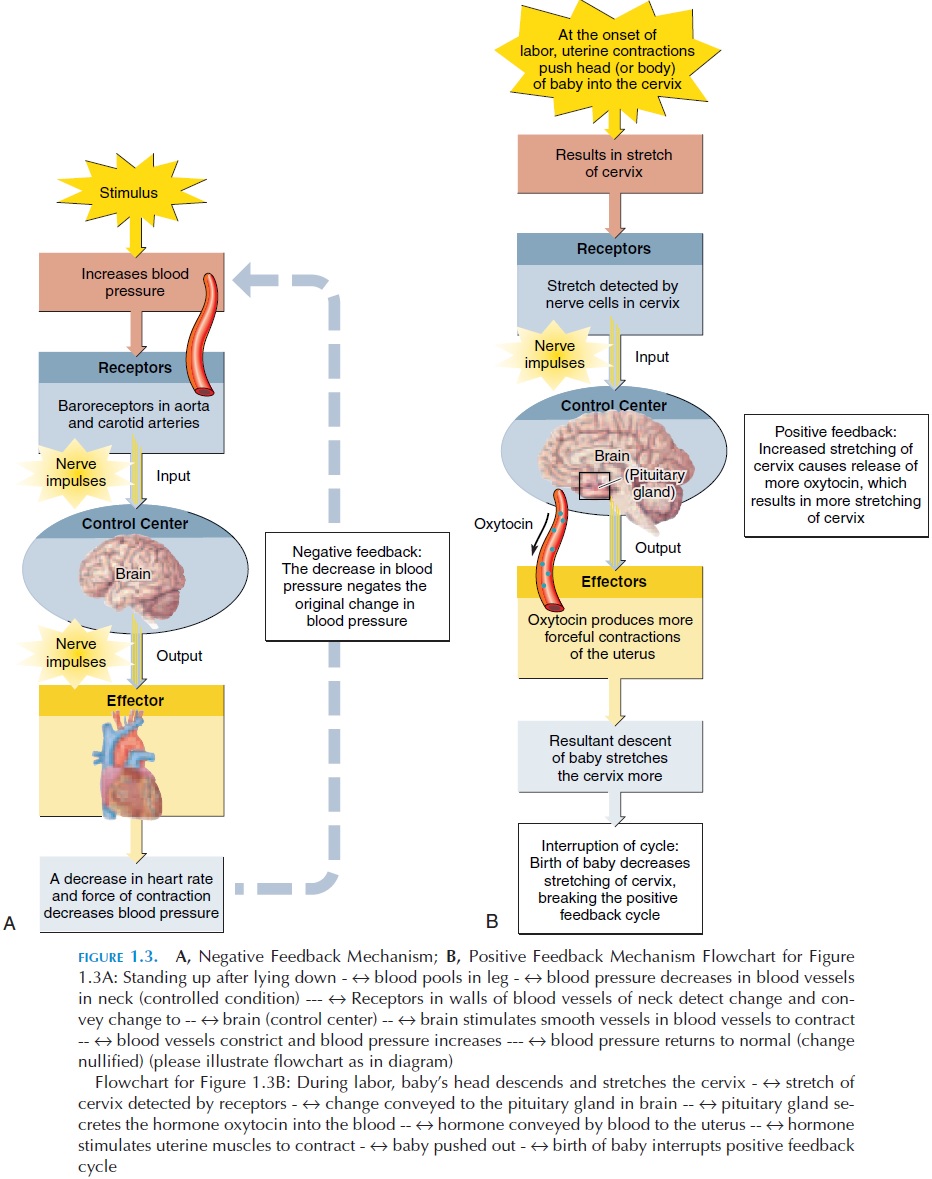Chapter: The Massage Connection ANATOMY AND PHYSIOLOGY : Introduction to Anatomy and Physiology
Homeostasis
Homeostasis
Traditionally, the body has been divided into many systems, according to specific functions. The ultimate purpose of every system, however, is to maintain a constant cell environment, enabling each cell to live. Fluid surrounds every cell of the body, and all sys-tems are structured to maintain the physical condi-tions and concentrations of dissolved substances in this fluid. The fluid outside the cell is known as the extracellular fluid (ECF), and the fluid inside thecell is known as intracellular fluid (ICF) (see Figure 1.2). The extracellular fluid inside the blood vessel is known as the intravascular fluid, or plasma. The fluid outside of the cells and the blood vessels is known as the interstitial fluid. Because the intersti-tial fluid surrounds the cells, it is known as the inter-nal environment; the condition of constancy in theinternal environment is called homeostasis. In short, all systems maintain homeostasis by regulating the volume and composition of the internal environment.

Each system continuously alters its active state to maintain homeostasis. The maintenance of homeo-stasis can be compared to the working of a baking oven. When the temperature is set, the heating ele-ment (the effector) is switched on—indicated by a red light—to heat the oven. When the desired tem-perature is reached, the heating element is switched off and the light goes out. When you open the oven door (without switching off the oven, of course) to check the food that is baking, the light comes on again—have you noticed that? When you open the oven door, the heat escapes and the temperature drops slightly. This drop in temperature is detected (receptor) and conveyed to the thermostat (the con-trol center) in the oven and the heating element isswitched on.
Similarly, the body has various detectors to detect changes in specific elements. Let’s take, for example, the oxygen content in the blood. If the detectors (re-ceptors) find the level of oxygen becoming lower, they stimulate the system(s) that bring oxygen into the body—the respiratory system works harder until the oxygen level reaches the normal range.
Imagine many similar detectors located all over the body—monitoring calcium, hydrogen, and sodium levels; volume of blood; blood pressure; hor-mone levels; and body temperature. Can you picture each of these regulators monitoring specific elements and bringing about an appropriate action or change in various systems—all at the same time! You expect chaos. Instead, the body is orchestrated so beauti-fully that all systems work in harmony with one aim—to maintain homeostasis. When a person is ill, therefore, the body must be treated as a whole and not as individual systems. Massage therapy, to bring about complete healing, should treat the entire per-son and not only the diseased part or state.
FEEDBACK SYSTEMS
The sequence of events that result in maintaining homeostasis is known as a feedback system. In a feedback system, a particular variable is constantly monitored. Changes are instituted to decrease or in-crease the level of the variable to maintain the level within the normal range. Numerous feedback sys-tems are involved in the regulation of the internal en-vironment. The variable in question is known as the controlled condition. Any factor that changes thelevel of the variable is known as the stimulus. There- ceptor in the body monitors the variable and sendsinput to the control center in the brain. The controlcenter determines the normal range of values. De-pending on the change in the level of the variable, the control center sends out messages to structures that help nullify this effect. These structures are known as the effectors.
When you stand up from a lying down position, for example, blood pools in your lower limbs and your blood pressure drops as a result of the effects of grav-ity. This drop in pressure is detected by receptors lo-cated in the blood vessels walls in your neck. The re-ceptors convey the change in blood pressure to the brain (control center) via the nerves, and the brain sends messages to the blood vessels (effectors) to constrict. With constriction, the volume decreases and the pressure inside the blood vessels increases, bringing the blood pressure back to the normal range. Here, the feedback loop has nullified the change that occurs. This feedback mechanism is known asnegative feedback (see Figure 1.3A).

Rarely, changes in the variable are enhanced. In such a feedback loop, change produced in the vari-able is conveyed to the control center, and the control center intensifies the change. This feedback mecha-nism is known as positive feedback (see Figure 1.3B). For example, at the time of labor, the head of the baby descends and stretches the cervix (the lower end of the uterus). The stretch is detected by recep-tors and conveyed to the pituitary gland located in the brain. The pituitary gland secretes a hormone (oxytocin) that produces uterine contractions. The uterine contractions push the baby down, further stretching the cervix. This process continues until the baby is born and the cervix is no longer stretched. Be-cause positive feedback reinforces the change, it is not a feedback mechanism commonly used by the body.
When all the components of every feedback system work well and homeostasis is maintained, the body remains healthy.
Related Topics